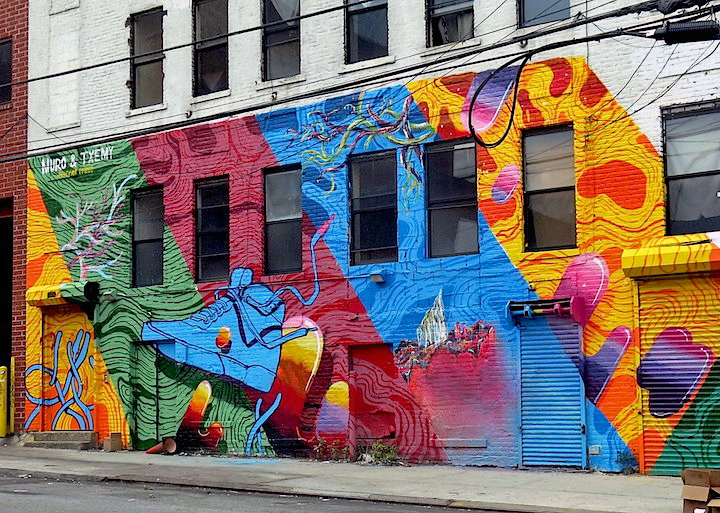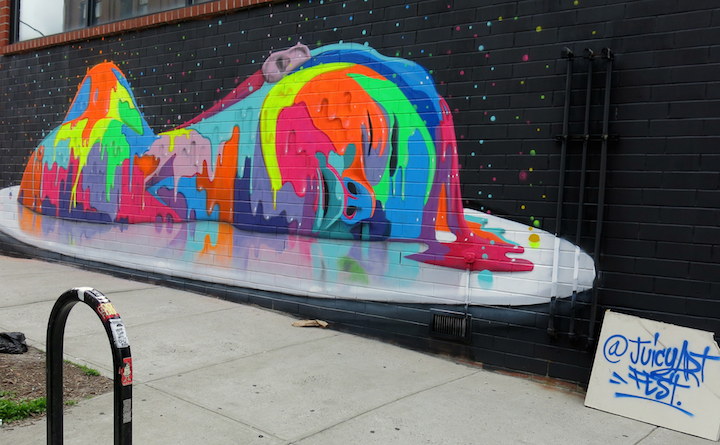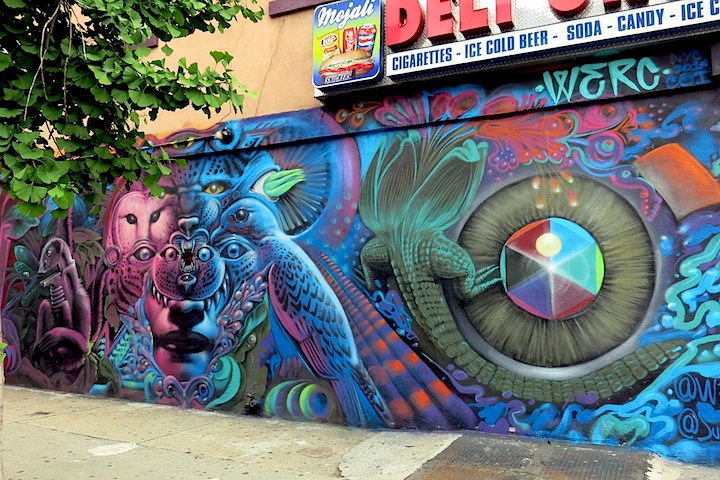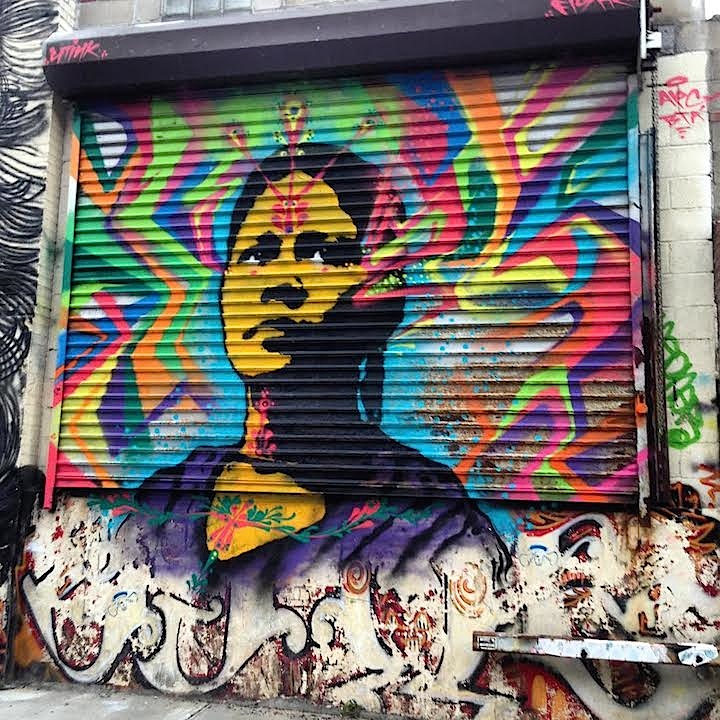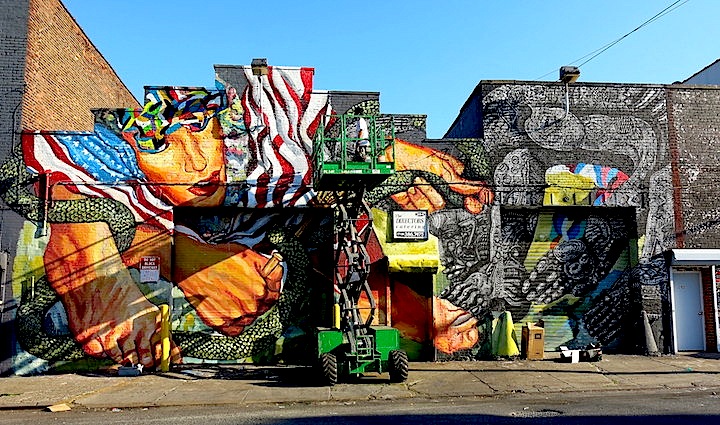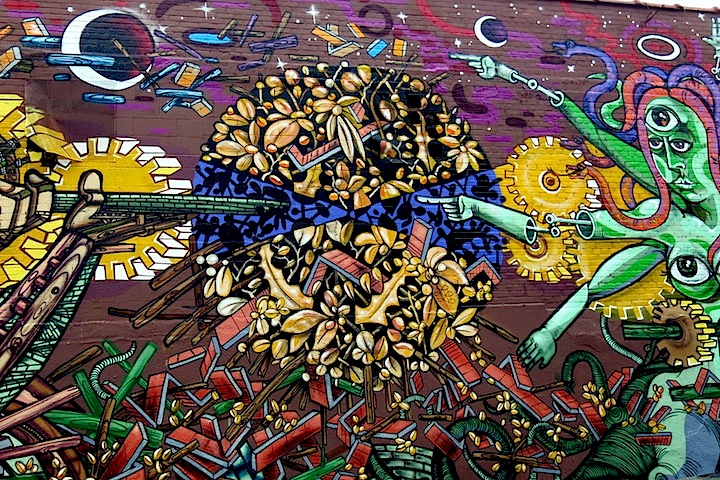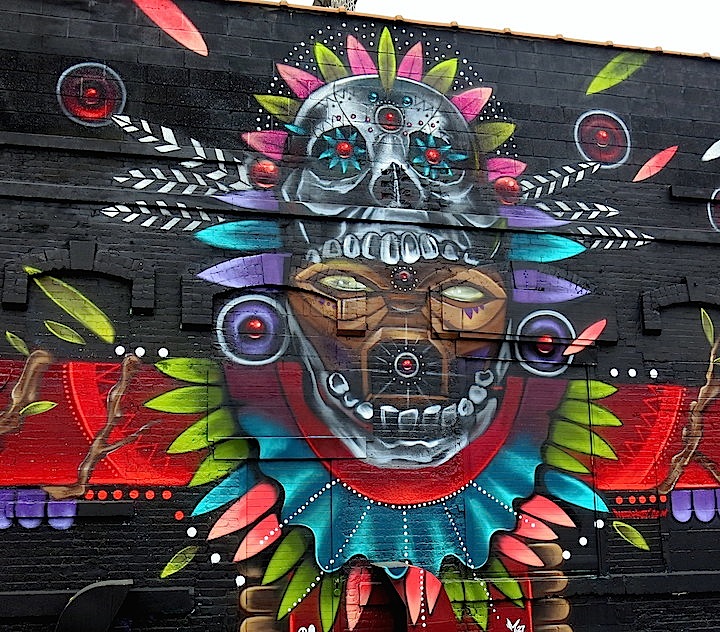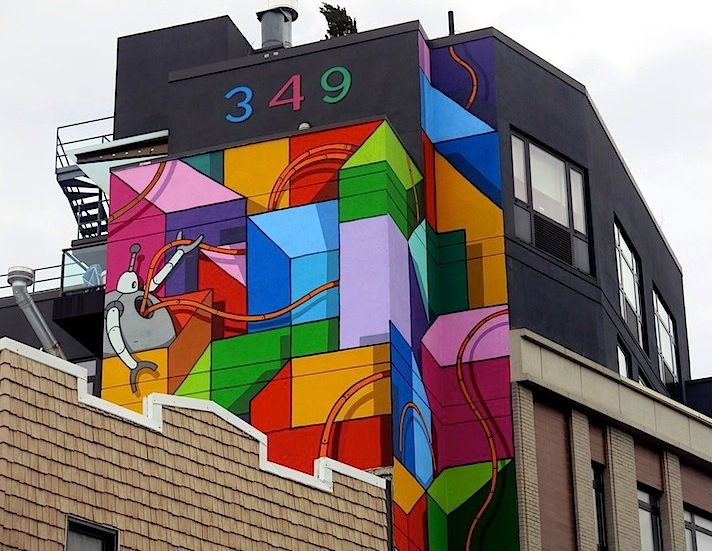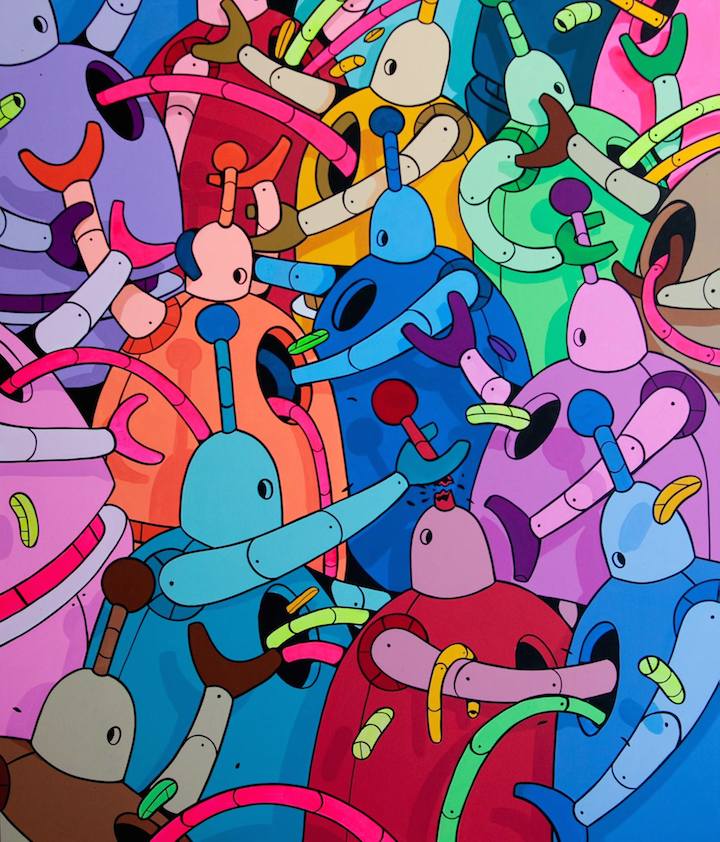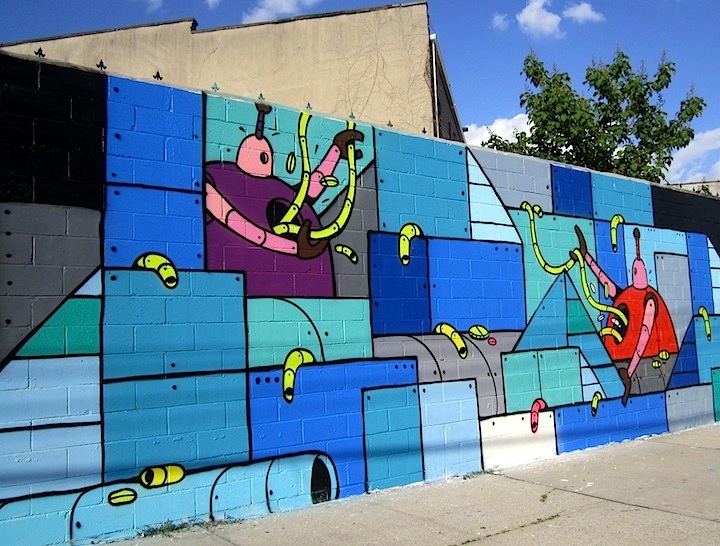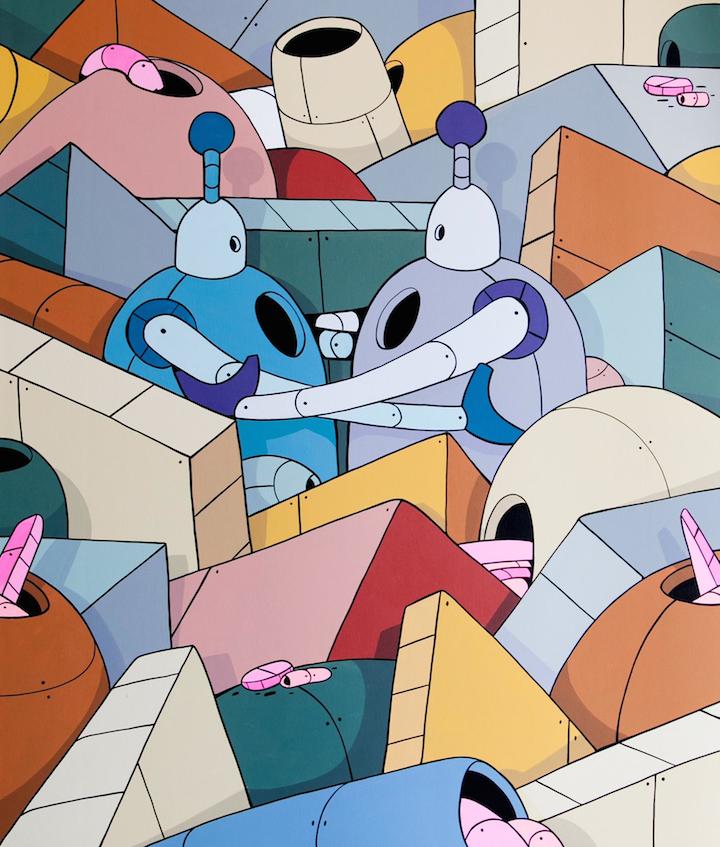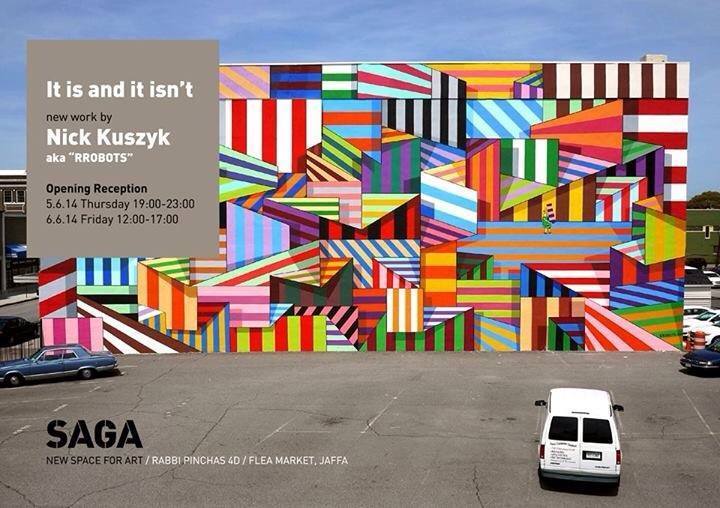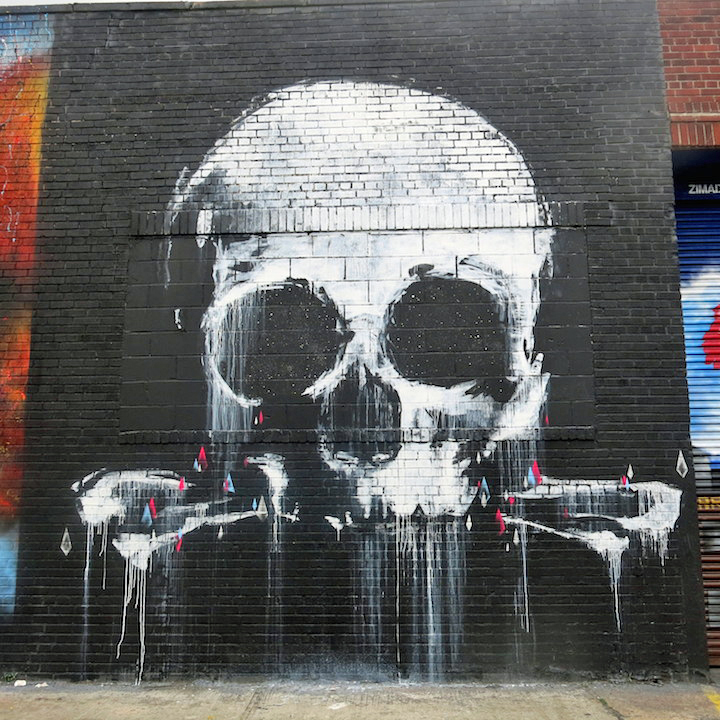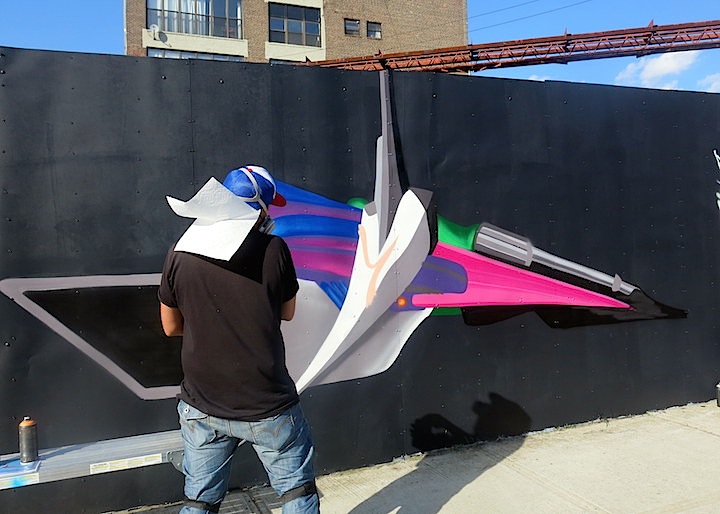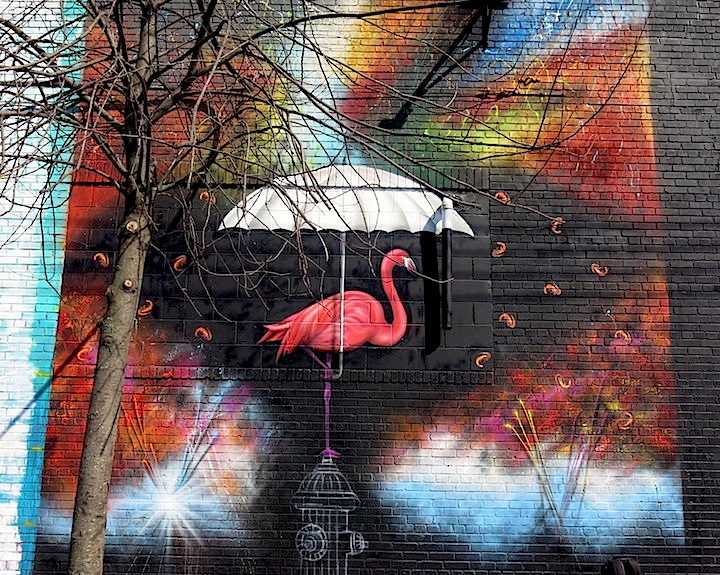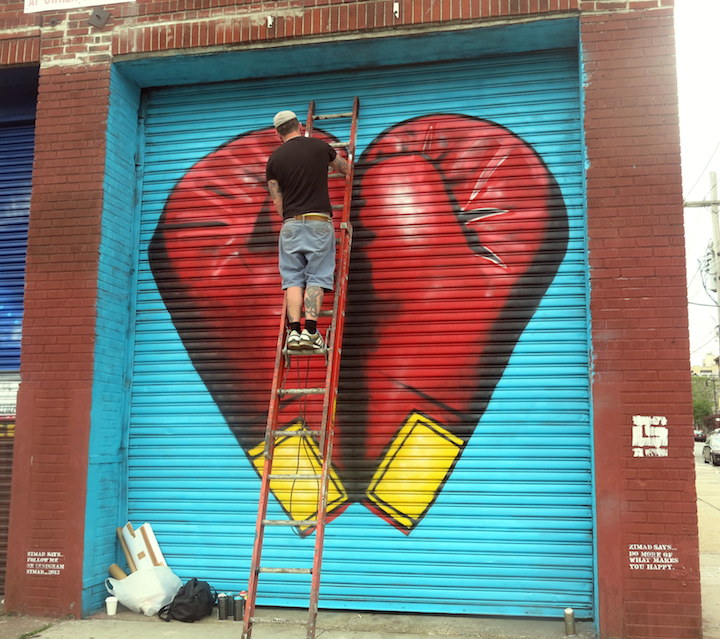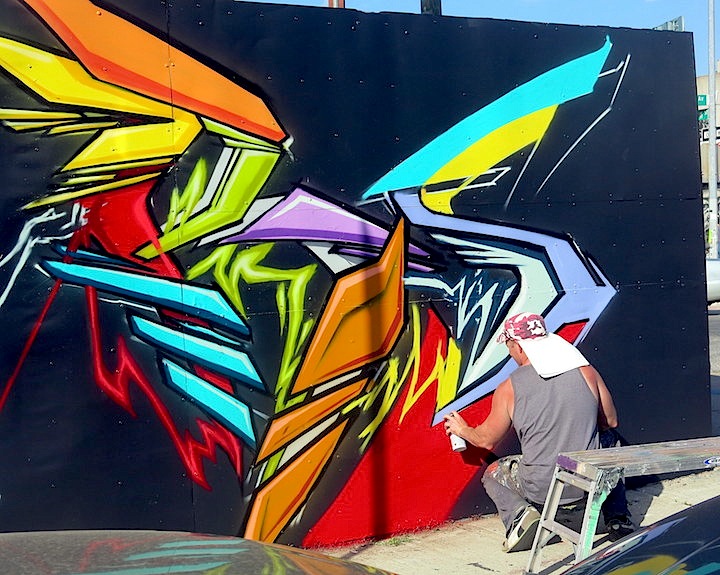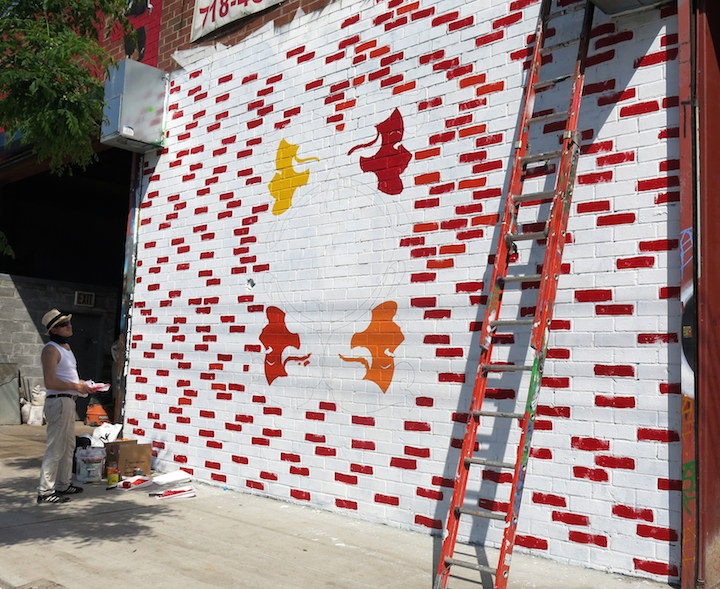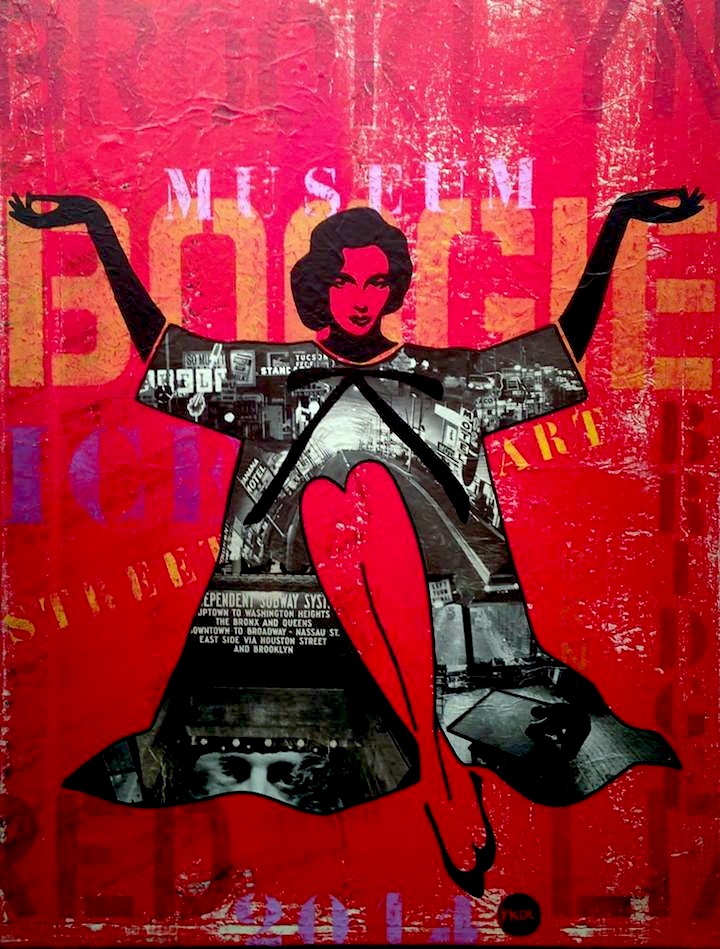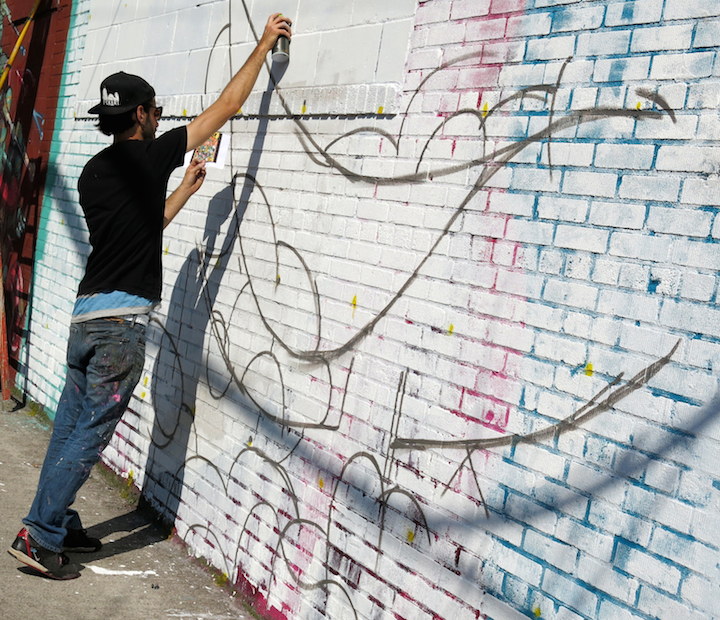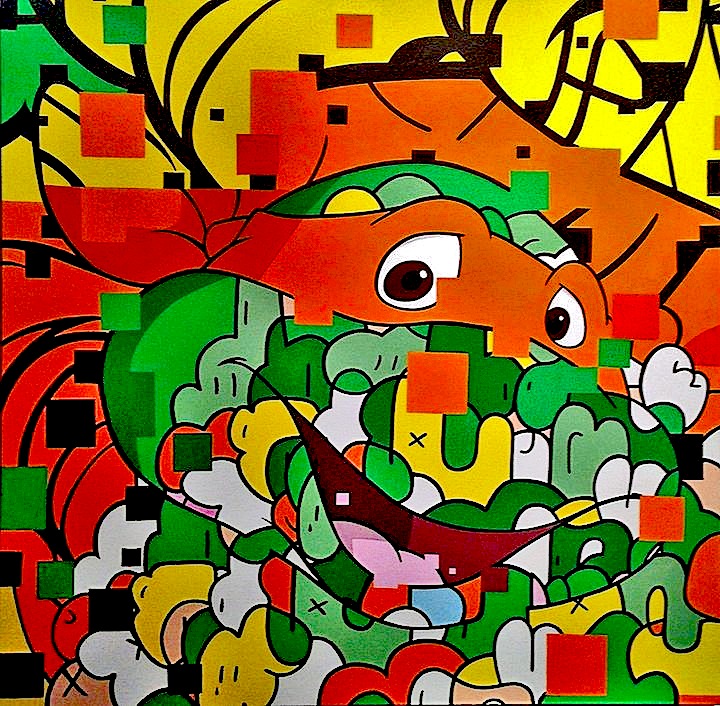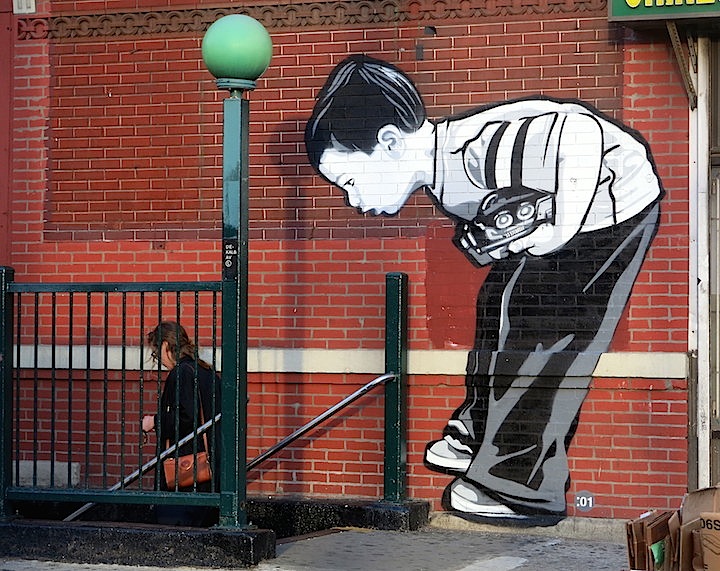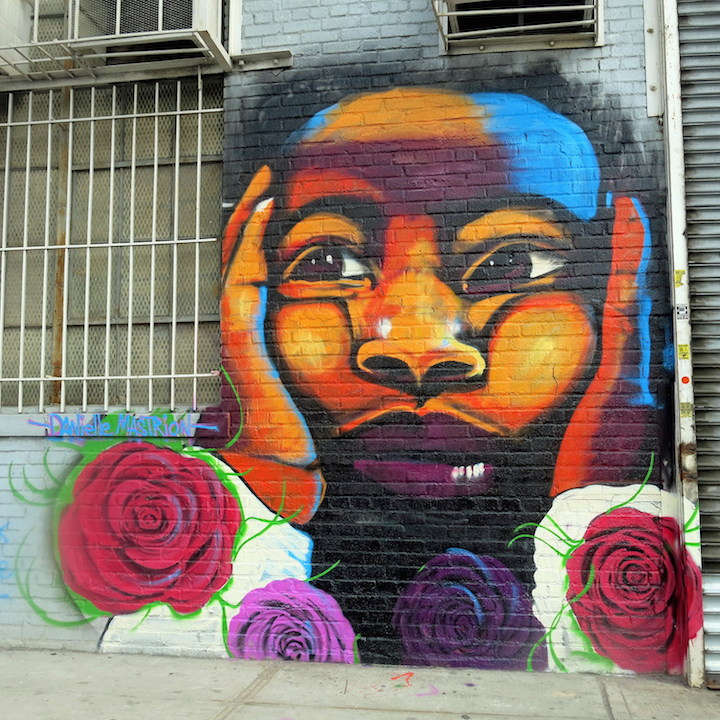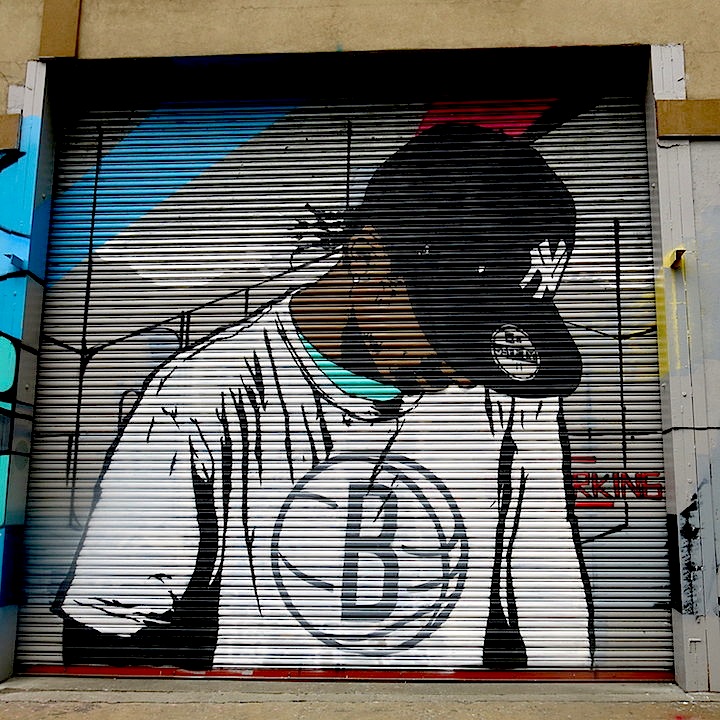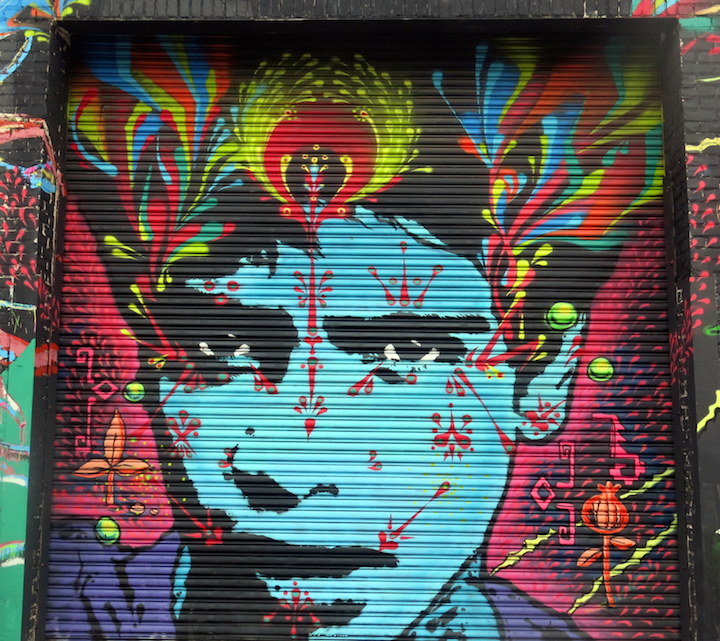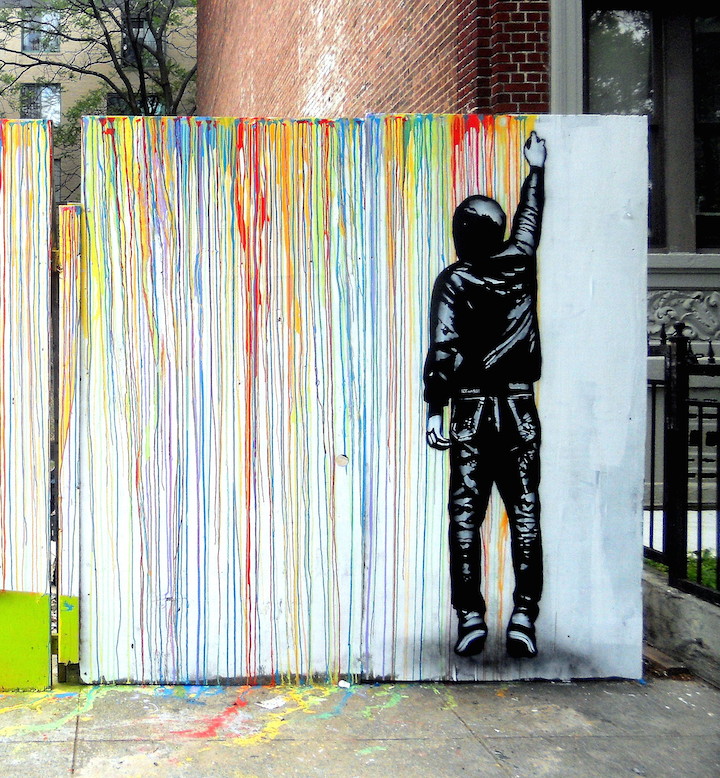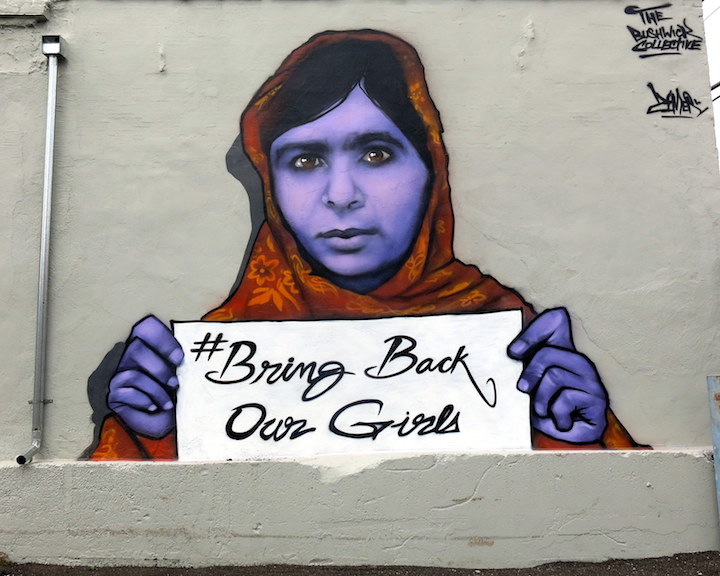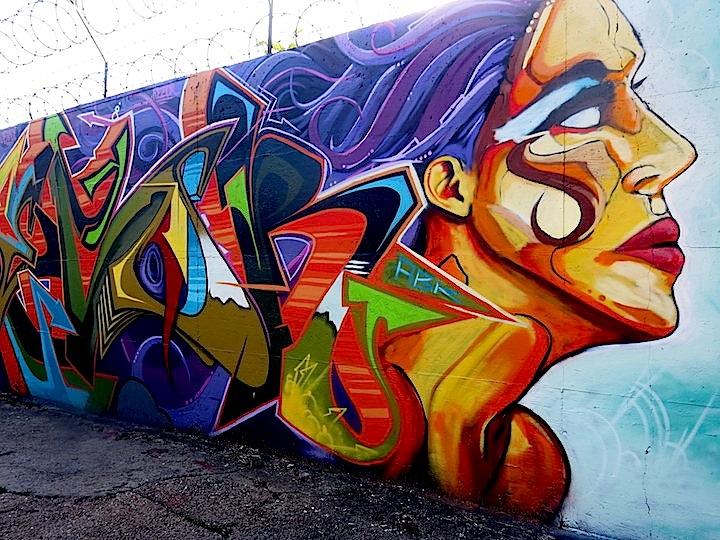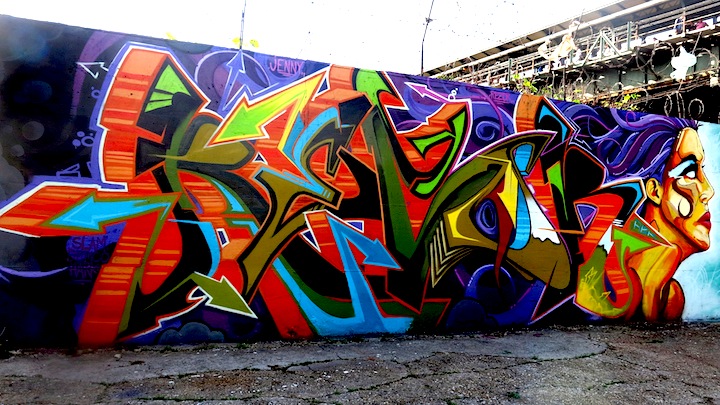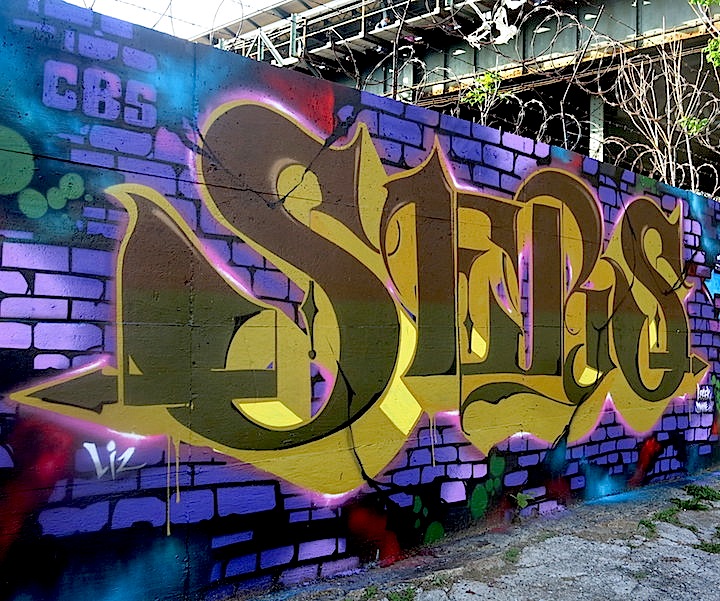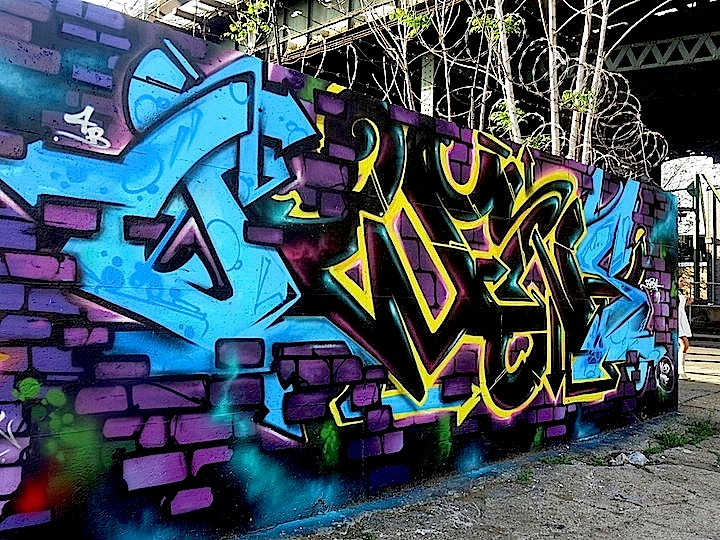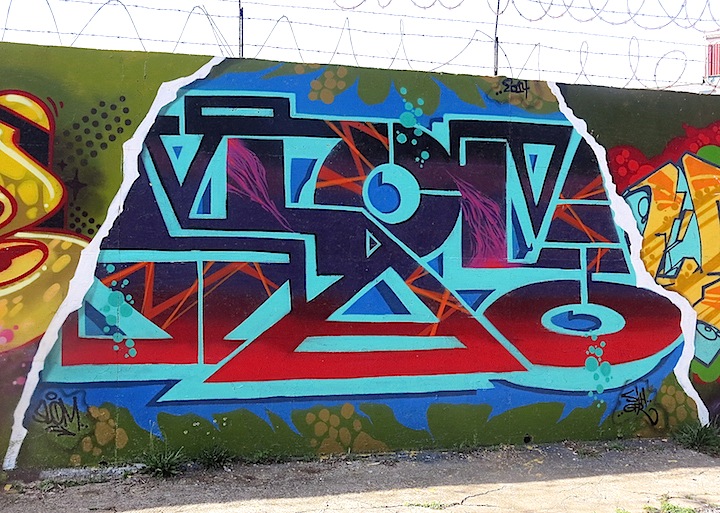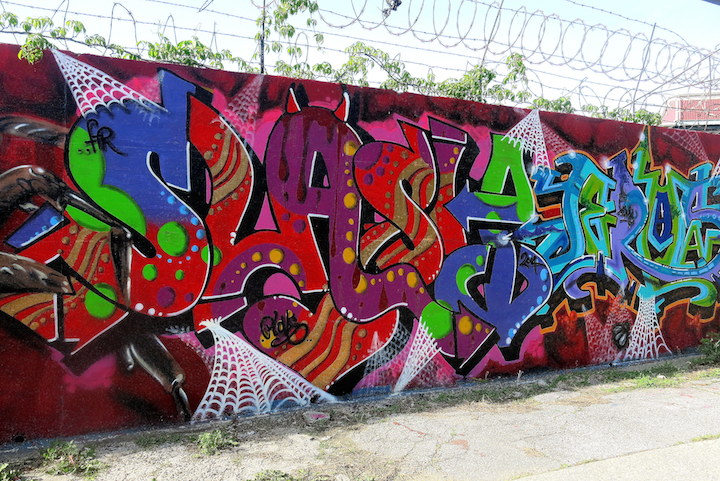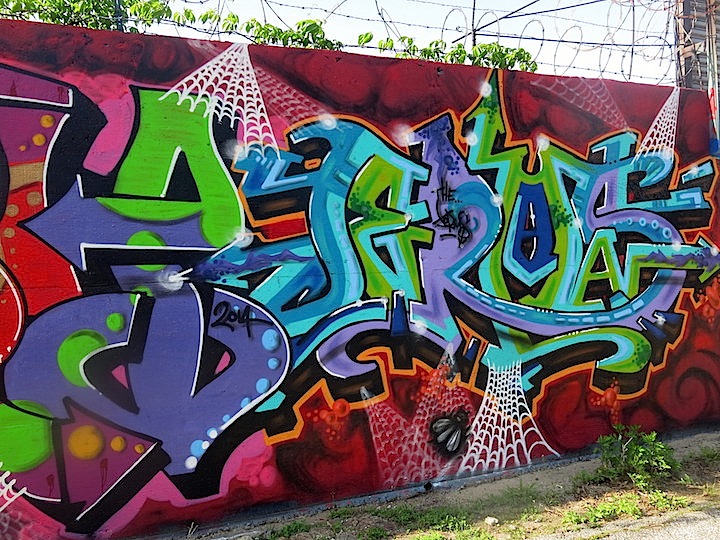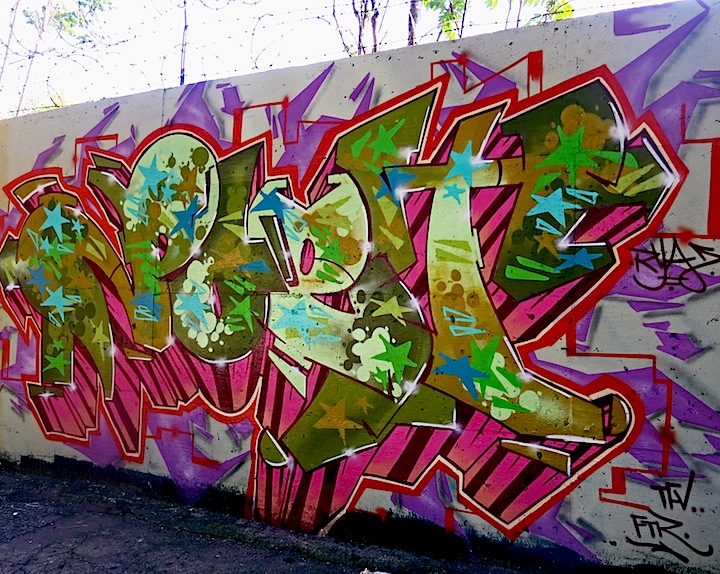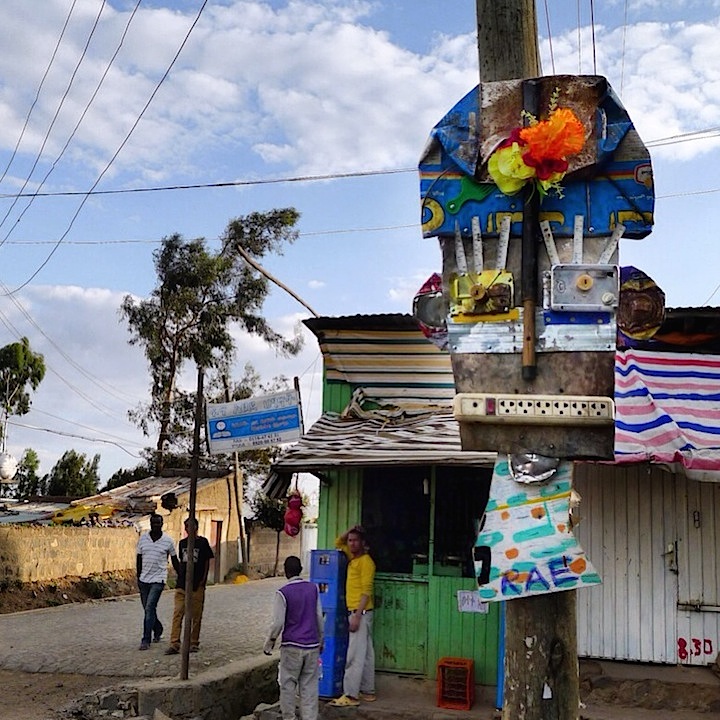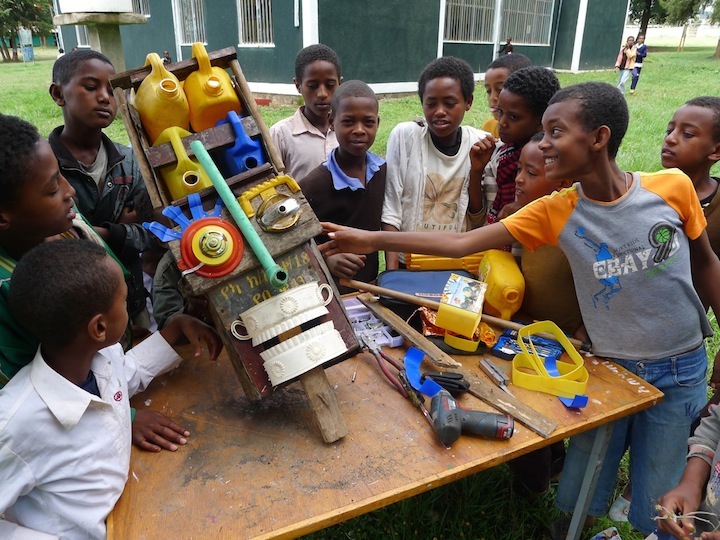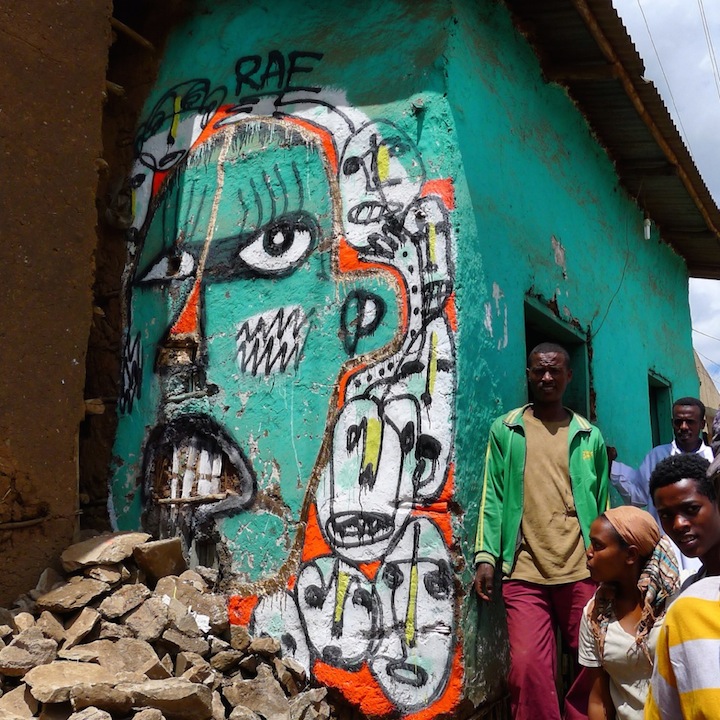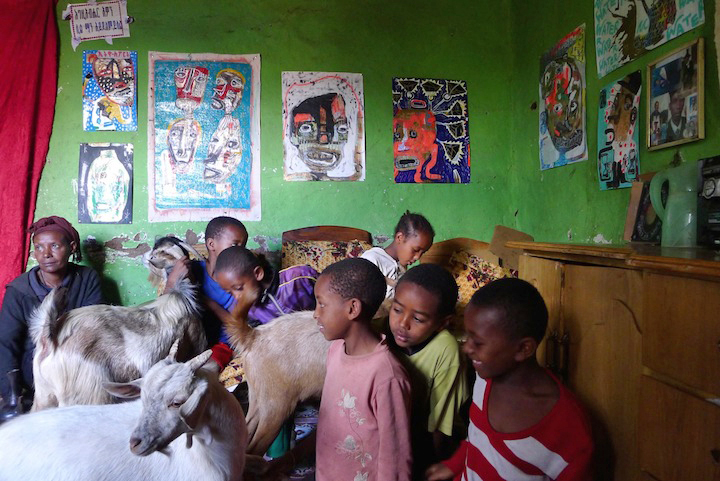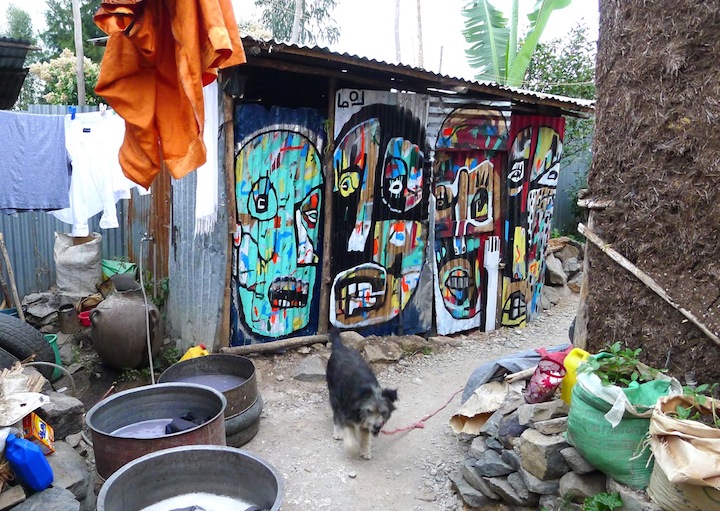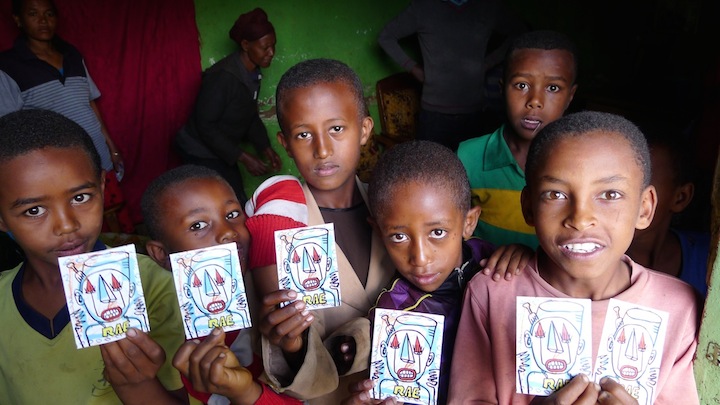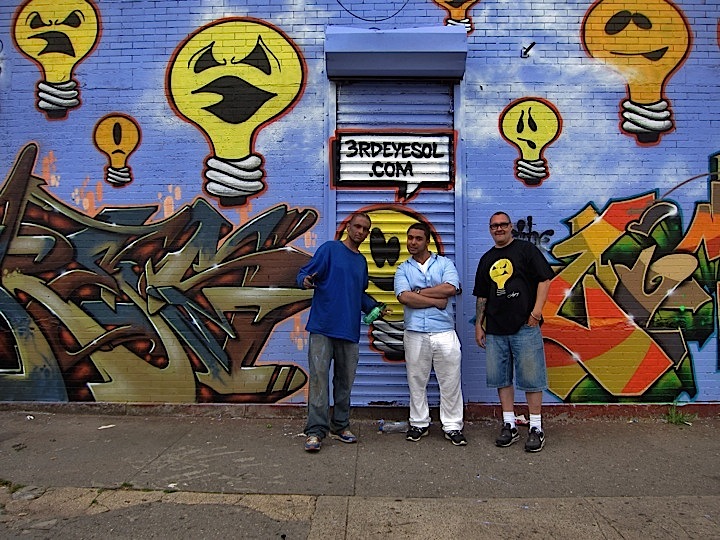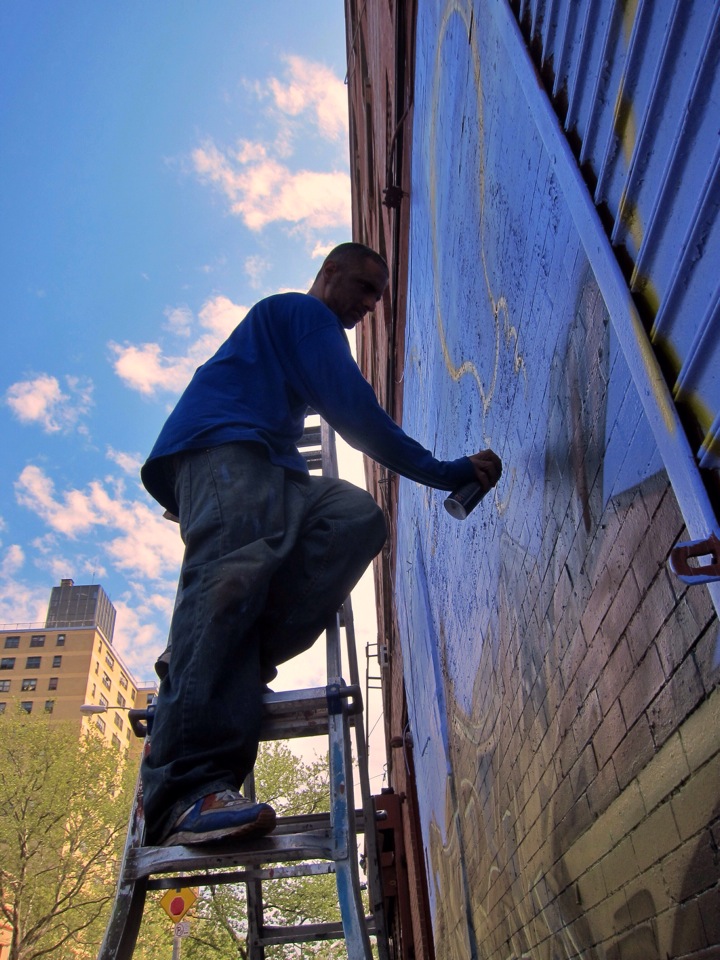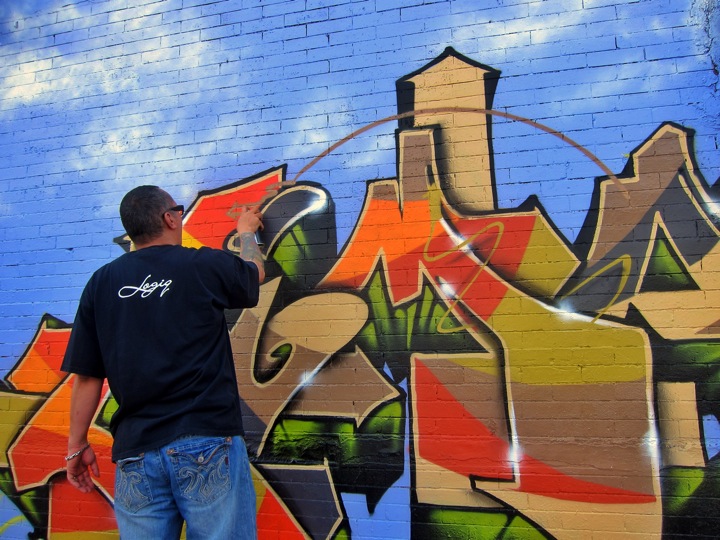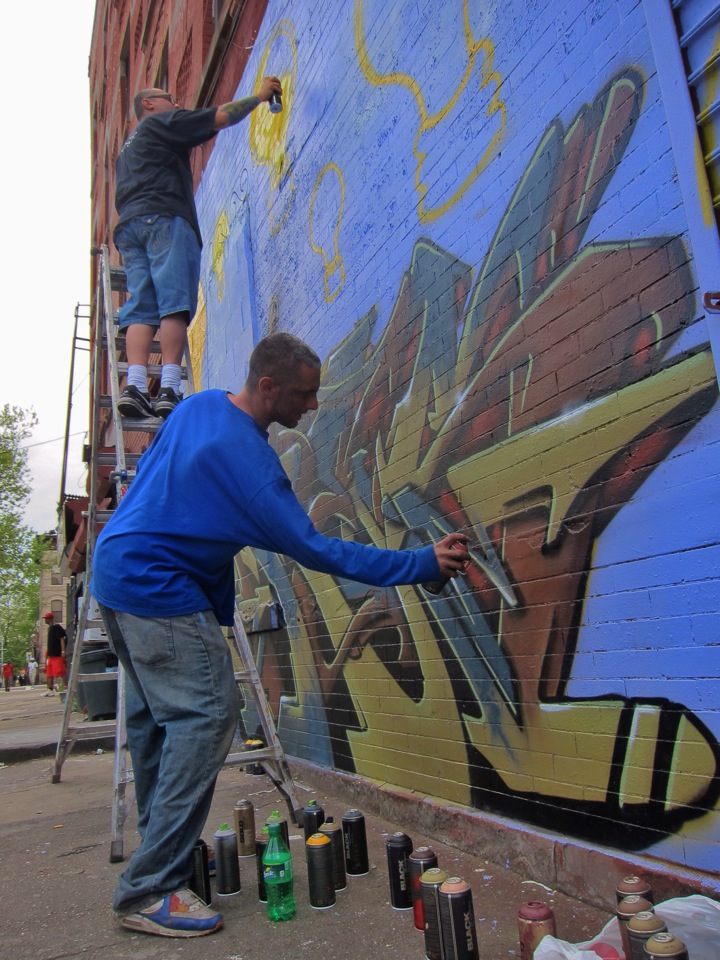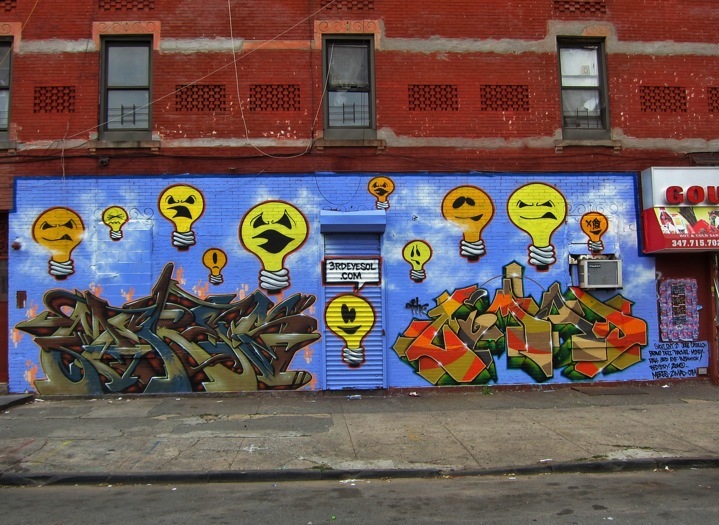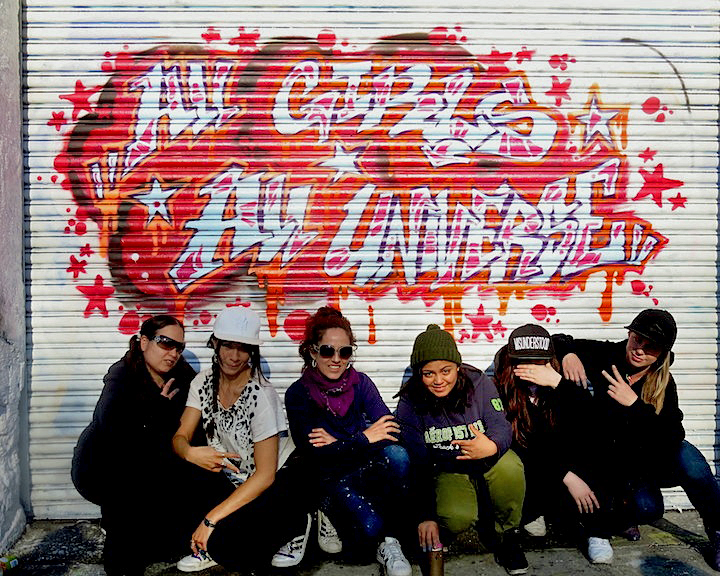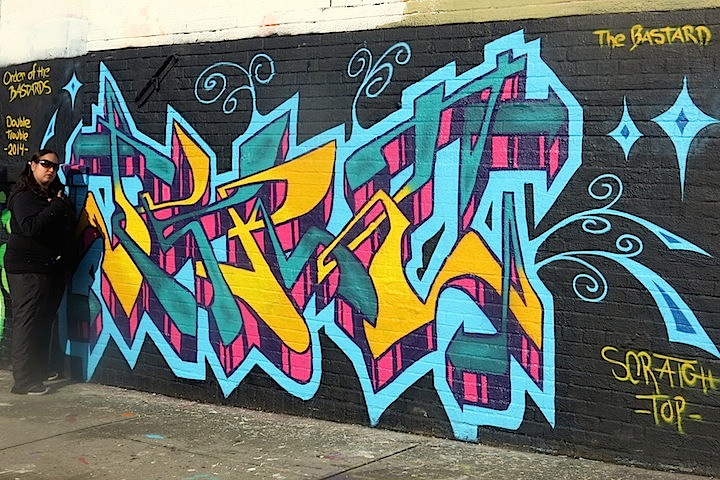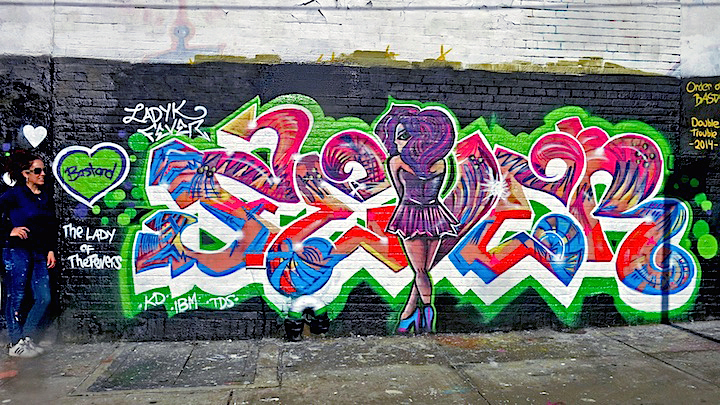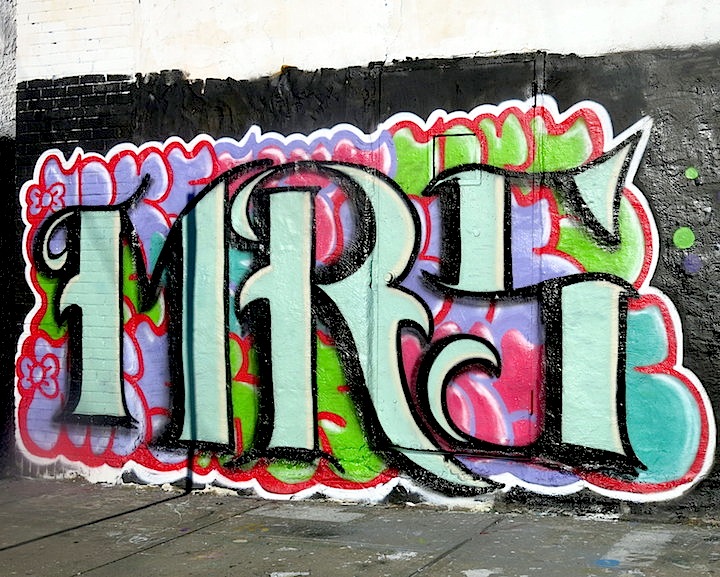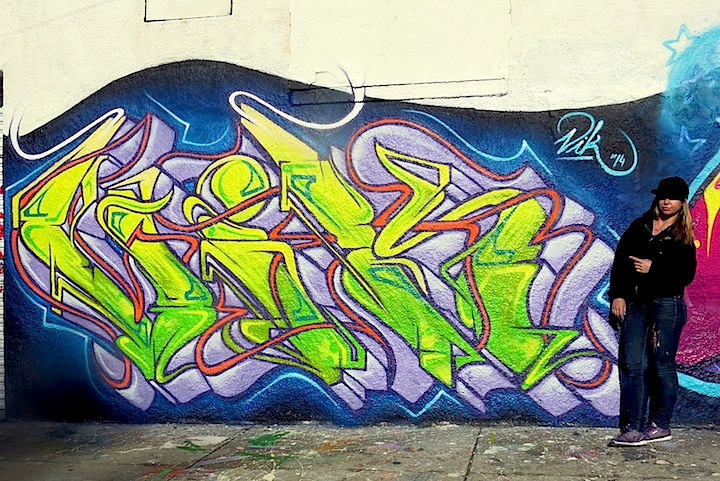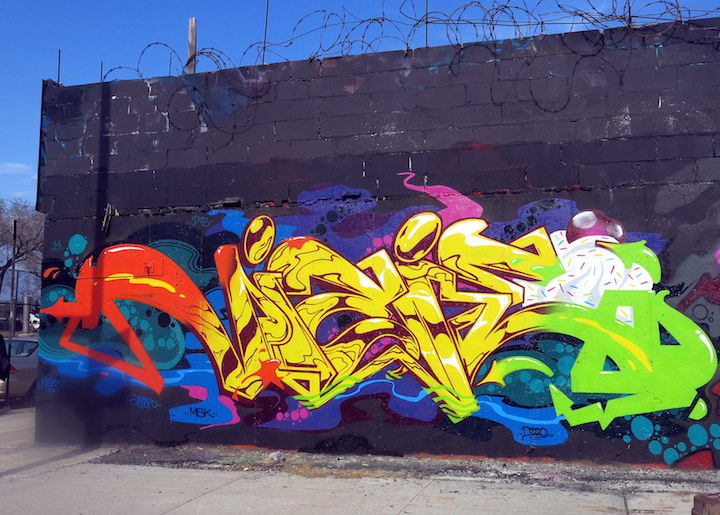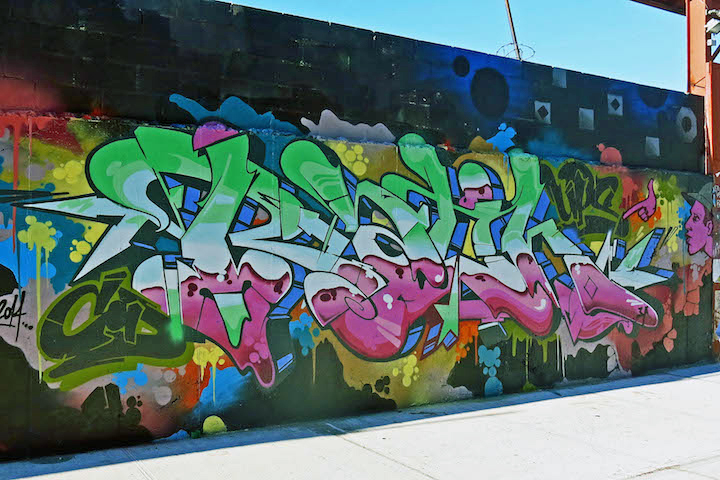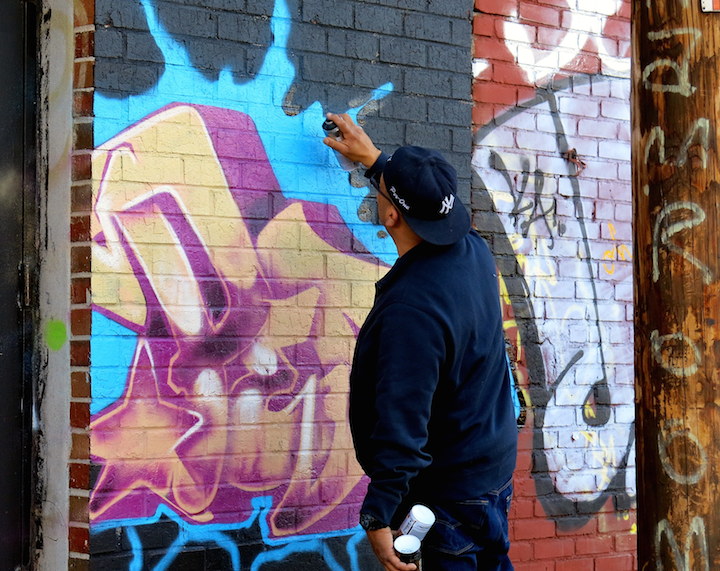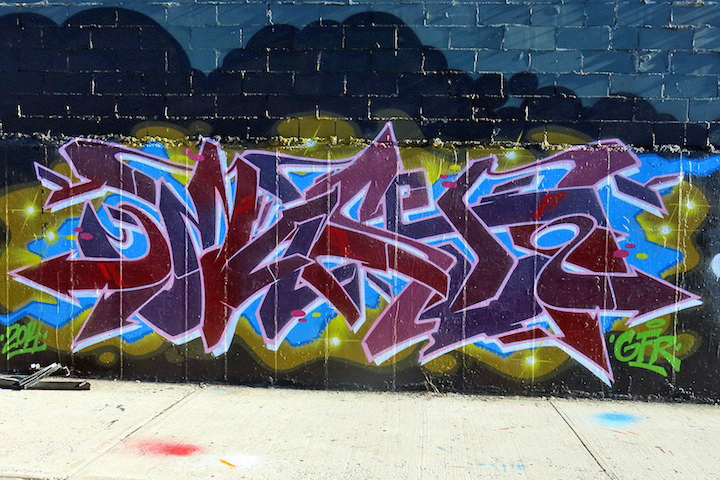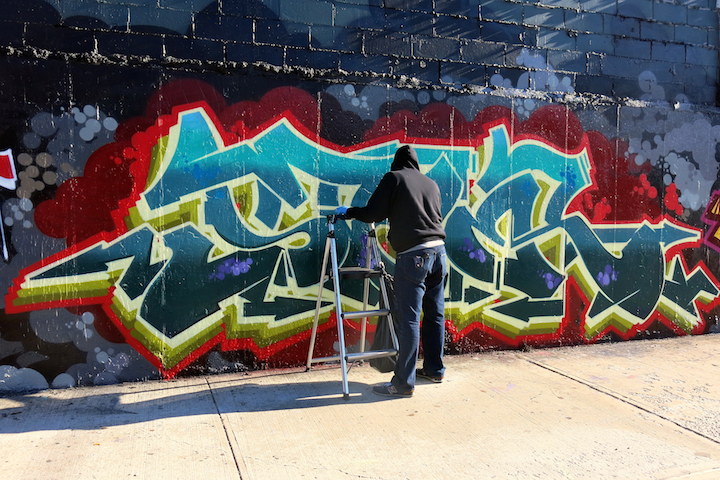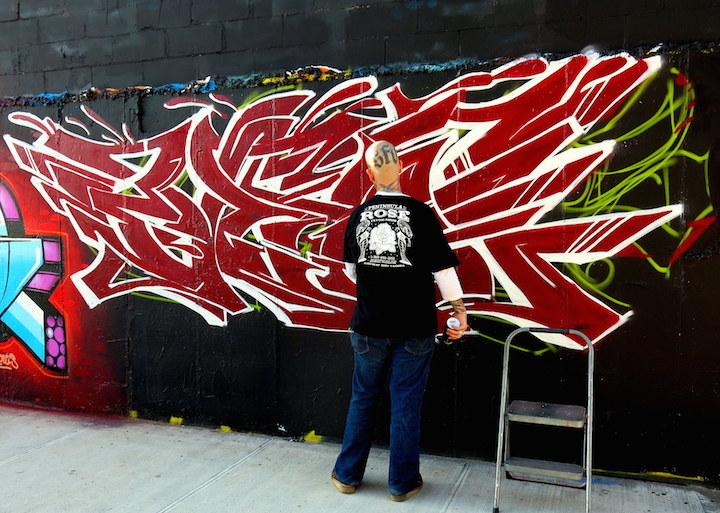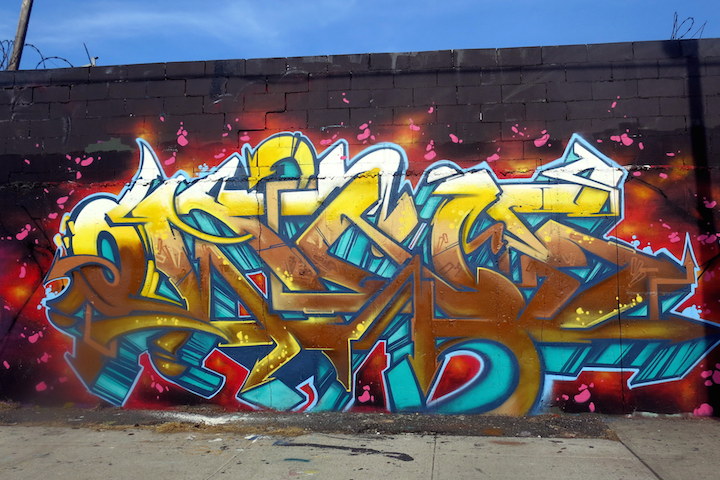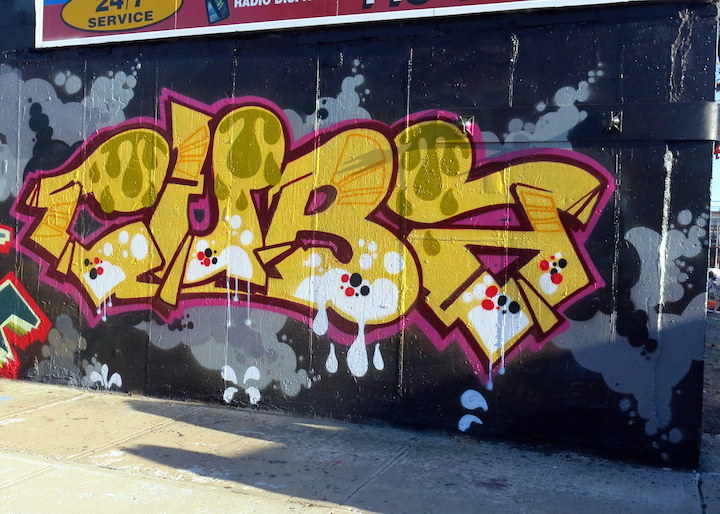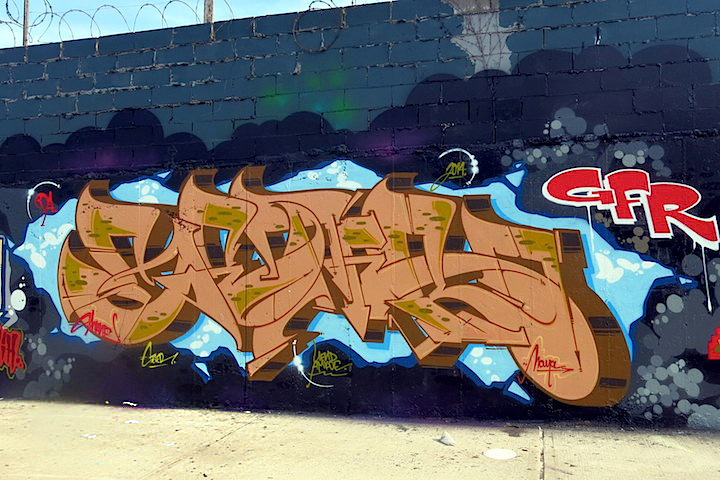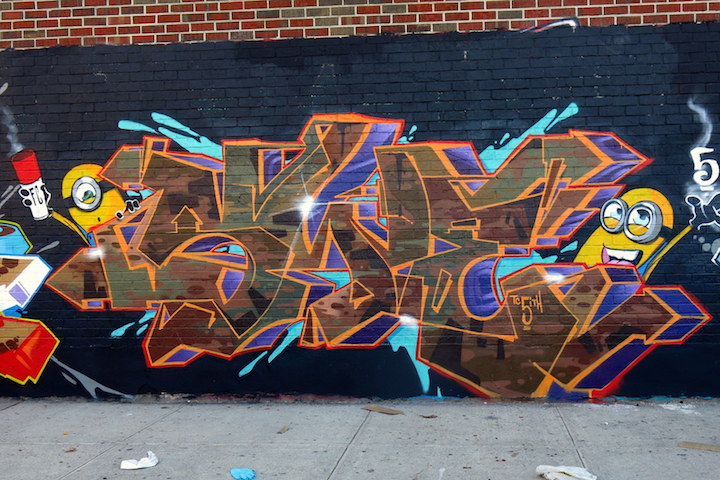With its vibrant colors and swooping shapes, Chor Boogie’s art is charged with a sumptuous intensity. Earlier this year he shared his visions with us New Yorkers at 5 Bryant Park. It was a great opportunity to speak to him and find out a bit about this talented artist.
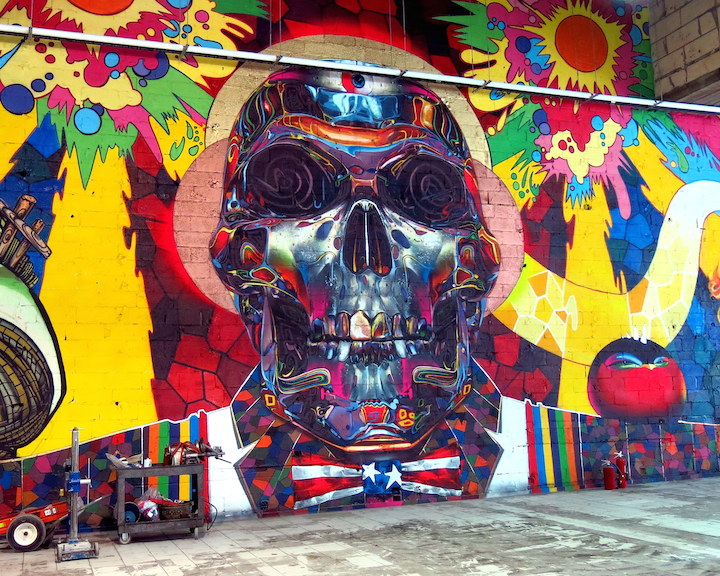
When and where did you first get up?
I began tagging in Oceanside in San Diego, California in 1993.
Who or what inspired you at the time?
I liked the illegal aspect of it. I had no particular inspiration. But I looked up to Phase2, Riff 170 and Vulcan.
Do any early memories stand out?
Getting arrested. It happened when my father was moving from one house to another. He trusted me to hold down the house. But one night I decided to invite a bunch of graffiti kids over. By the end of the night, six or seven of us got together and started tagging down this huge highway. We were wasted, drinking OEs and doing all sorts of stupid things. I got the idea to hit the wall closest to the freeway, so I climbed down. All of a sudden, police came racing down the highway for us.
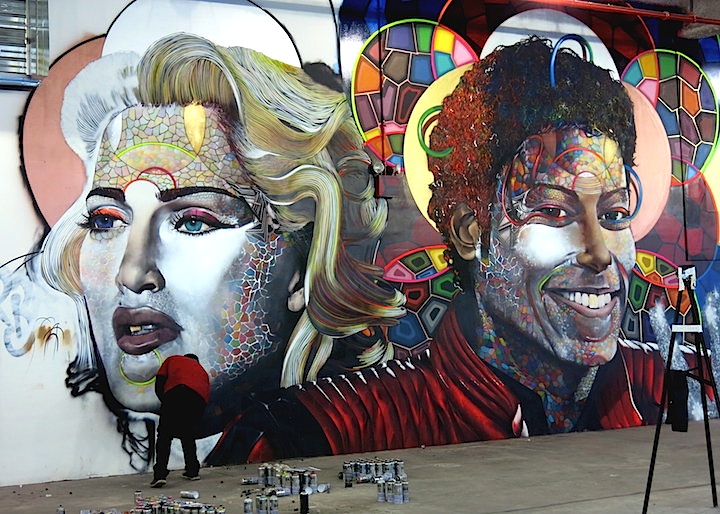
What was the outcome?
I was arrested along with Bash, a writer who ratted me out giving the police my name and everything. I was faced with a judge that was ready to put me away for some time. Luckily, I had my grandma. She hooked me up with a criminal lawyer who managed to get the judge switched. And he managed to get a judge for my case who loved art. This judge requested that I bring my portfolio to court. When she saw it, that’s all she could speak about. While the prosecuting lawyer was badmouthing me, all she could do was look at my art. She ended up giving me three years’ probation, a $500 fine and no community service. She also said that I had to paint a mural for the holidays — that I had to paint it and show her a picture of it when I returned to court. I returned with a picture of Santa Claus.
How did your family and friends feel about what you were doing?
My friends were writers so it was cool. My mom was cool about it too. She had my back. But I had to keep it a secret from my father. He found out eventually. He was not thrilled.
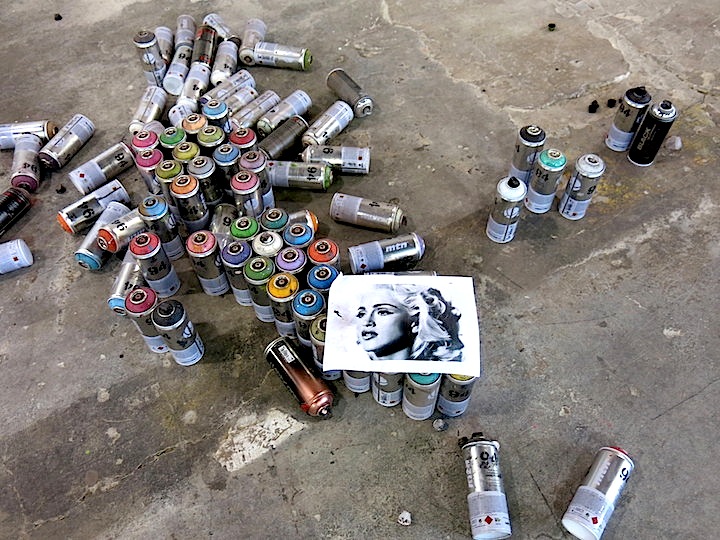
Any thoughts about the graffiti/street art divide?
I don’t use the word “graffiti.” I call it Modern Hieroglyphics or Street Romantic Voodoo. Graffiti sounds dirty. Graffiti is a government term that had nothing and has nothing to do with our art form.
What about the movement of street art into galleries?
It’s already been there. People just want to act as if it’s a new thing.
Where would you like to paint?
I’d like to paint anywhere. But if it was the end of the world, I’d have to say Australia. It’s all the way out there in the middle of nowhere. It’s the land down under.
Do you prefer working alone or in collaborating with others?
Alone mainly. Collaborating can be interesting. Sometimes it’s fun. Sometimes it’s b.s. It can be a hassle. But I’ve had good collaborations.
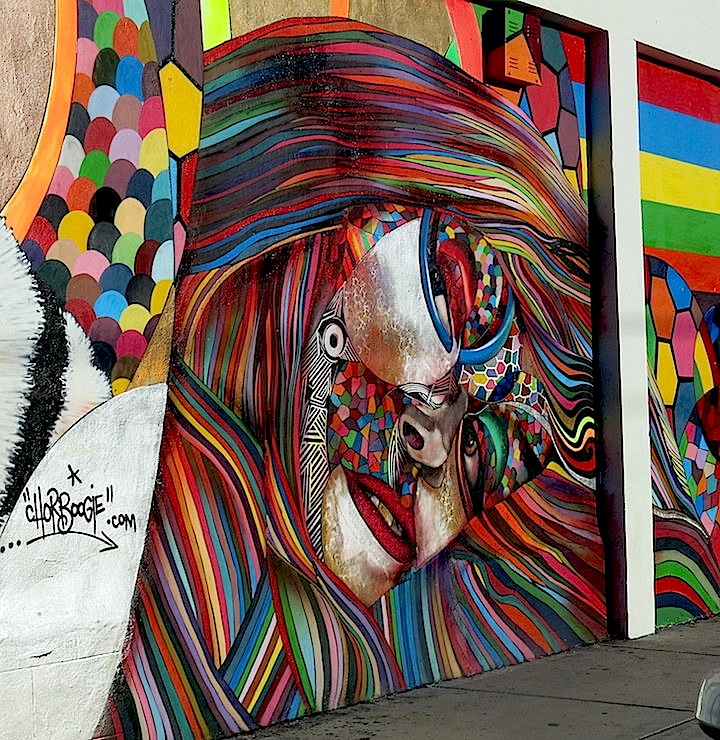
With whom would you like to collaborate?
I’ve painted with Phase2 and that was a dream. I’d like to paint with Vulcan. I would have gotten down with painters like Gustav Klimt, Salvador Dali, Michael Angelo and Caravaggio, if they were still with us.
What inspires you these days?
Music.
Are there any particular cultures that have influenced your aesthetics?
The hip-hop culture.
Do you work with a sketch in hand, or do you just let it flow?
No. I stopped using sketches ten or twelve years ago.
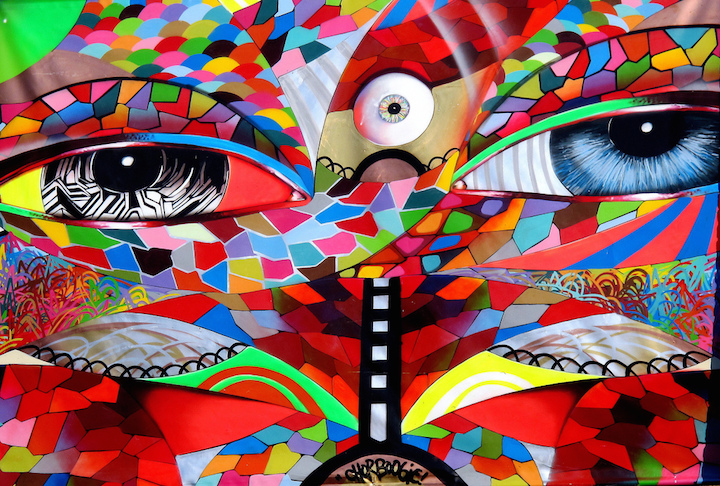
Are you generally satisfied with your work?
Yes! I don’t leave it until I am.
When you look back at what you did in the last few years, how do you feel?
How can I not feel good? I feel grateful about everything coming my way.
What do you think of the role of the Internet in all of this?
The Internet is one more tool of communication. I have nothing against it.
Do you have a formal arts education?
No. The street was my sketchpad.
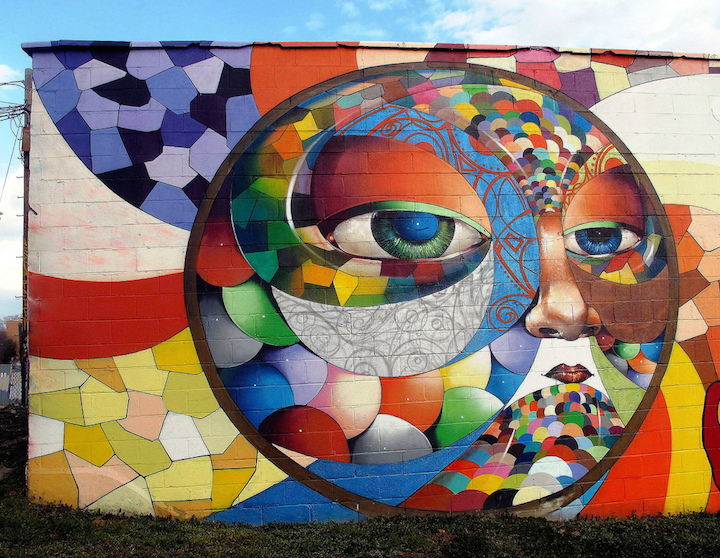
What’s the riskiest thing you’ve done?
If I tell you, somebody’s going to jail.
What do you think is the role of the artist in society?
He’s the rat in the rat race trying to get the cheese.
What percentage of the time do you devote to your art?
One hundred percent.
Interview with Chor Boogie conducted by Lenny Collado aka BK Lenny and edited by Lois Stavsky; photos 1-3 at 5 Bryant Park by Dani Reyes Mozeson; 4. Wynwood, Miami; 5. Beacon, NY and 6. Washington DC by Lois Stavsky
